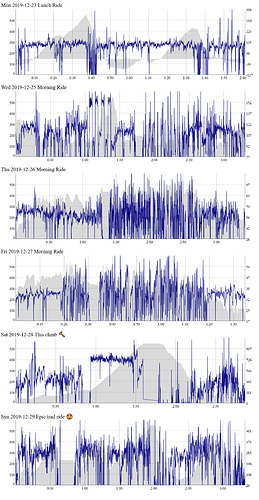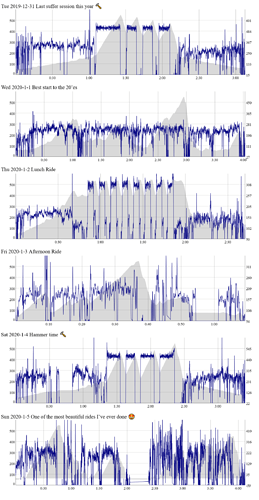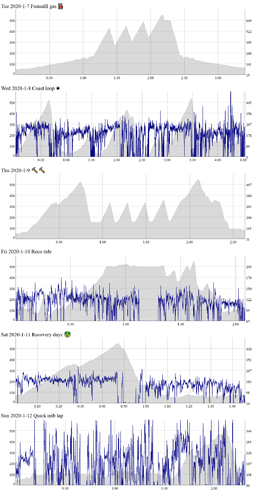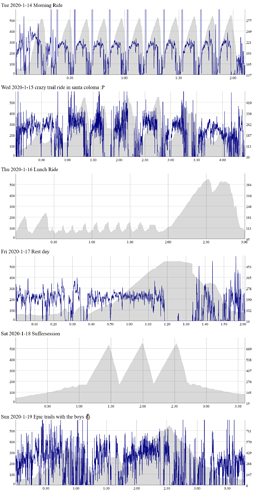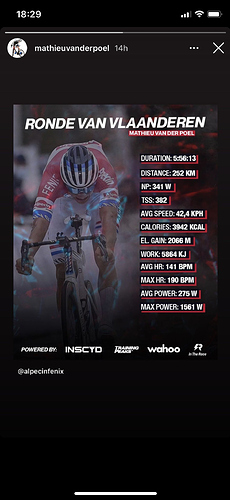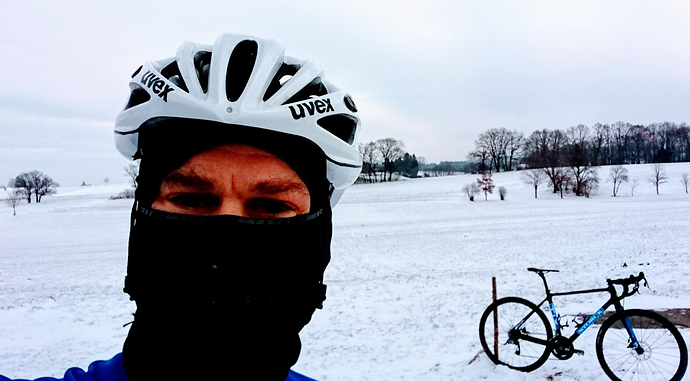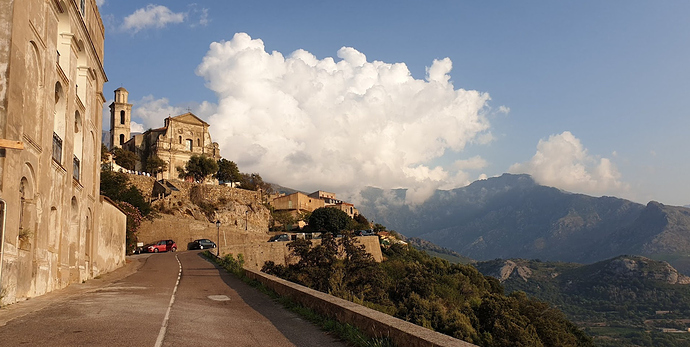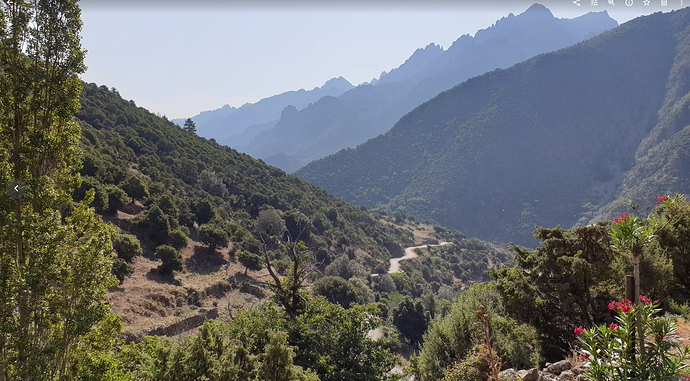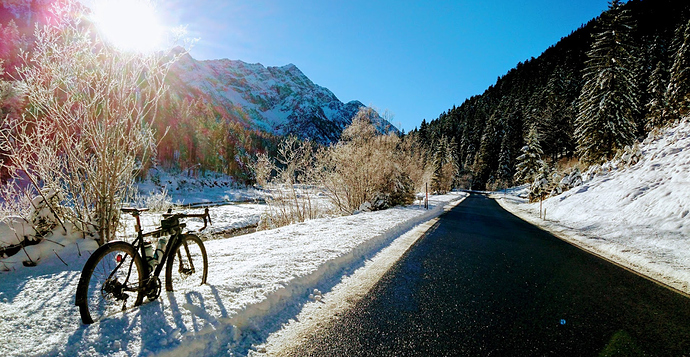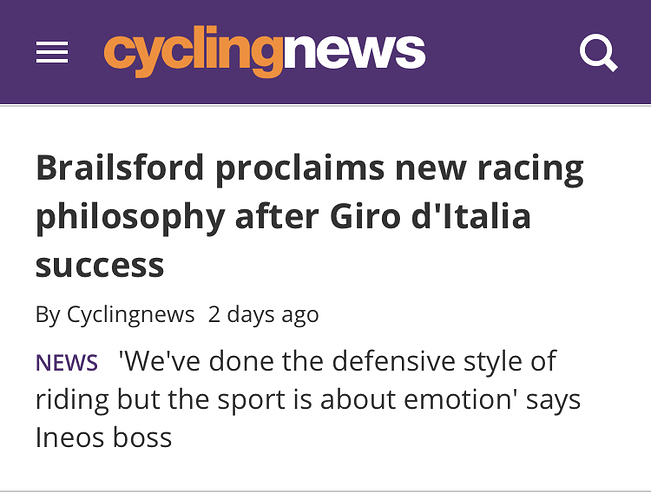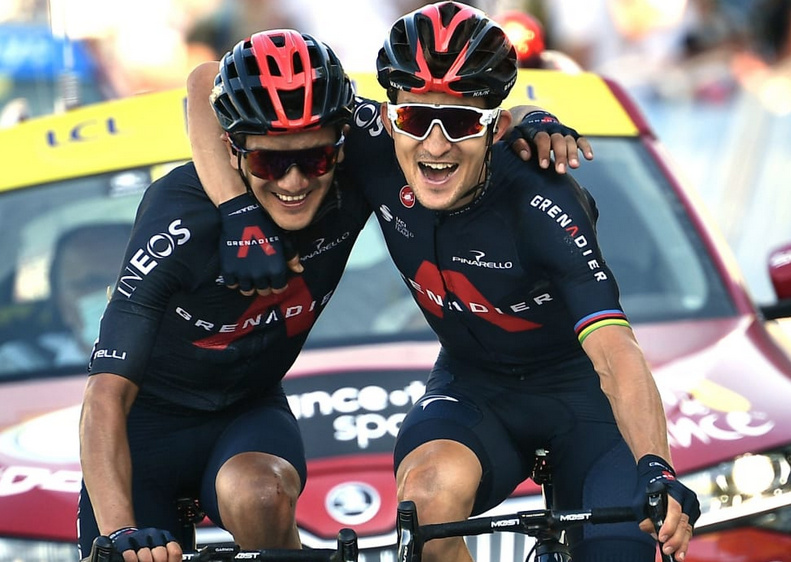I noticed this too. However, here’s WVA last 5 weeks, which include the Tour. This week he’s logged 12hr. I guess you could call this a rest week.
As promised, here is what I was doing pre-2020, as what I would consider a pretty standard training block (some coaches recommend 2-3, but not always 3 intervals per week)… Pretty standard, I would say. Sometimes sneak in a little bit longer recovery on that day 4:
And here is what I have been doing after 2020. More of the Matt Dixon approach, keep recovery “built in” rather than scheduling an entire recovery week:
Some observations from me:
- When I get sick, it’s much easier to jump back into things. Before, I would have to schedule everything completely over again if I got sick. Getting sick during weeks 1-3 of a 3:1 work:recovery schedule always caused more stress trying to figure out where to go from there. Especially if I had A events coming up
- My legs feel good just about as often as they did last year. I feel more like I’m “slightly pushing” with my progression, compared to feeling on the edge last year right around week 3 (in line with what Dixon says)
- I am more consistent with my training and feel better when things come up. Before I had a really hard time missing a training day for other obligations because I didn’t want to mess things up before the training week. Then the training week would come and I would just eat and do whatever. This way I stay “on top of my game” throughout much more of the season. I don’t indulge or get lazy on my weeks off, and I don’t ever have to feel horrible coming back into training after a recovery week like many people might feel on that first workout back.
Some downsides:
- Scheduling progressive overload is a pain in the you know what. 3 weeks progressing overload and then taking a week off is extremely popular and for good reason, it’s easy to structure the overload and take a week off. It’s also easier to prepare for races and events
- You still probably should take a recovery week (just not as often). This might be an extra mid-season break for others, but after going through a full base and build plan with this “recovery built in” approach, I would take a couple days easy (2-4) before jumping into the build or race phase.
- If you are using a different approach that isn’t so laid out weekly like the screenshot I posted above, it can be difficult to manage your days (this goes in line with the #1 downside). For example, if you find out you need an additional 1-2 days of recovery after a 2 week block, and you add that in (which is important!), then your weeks could look like this, which is not very manageable for most of us with other things to do:
Like I mentioned, I’d be interested to see if anyone else has looked at this or tried anything similar (or if they know of any more literature). It’s worked well for me I would say, and I will be sticking with it for next season
A recurring theme with all current elite coaches is this “how much can an athlete absorb” question. Coaches tackle this slightly different, all in different flavours. You have the testing camp with the Norwegians or ISM (or even Ferrari as I just saw). And you have the pure “intuition and observe” camp with Filiol. However, this is all based on experience and simply talking to the athlete is the most used tool.
Depending on this total work load is determined. It appears to be fairly flexible. There aren’t any special workouts and they haven’t invented anything new. It’s more this determination of the total load that makes them good coaches.
That’s why I find it interesting to look into their training models and philosophies.
I love this type of stuff and dig into Simon Andreassen here and did a look at Victor Campenaerts the week before.
Thanks, beastly numbers for sure. I remember seeing a pic of cancellara’s srm displaying ca 280w avg in the 2010 Ronde.
I dont know if this is a common pro level coach opinion, but for instance Lotta Henttala’s (nee Lepistö) coach often makes the point that in a long road race NP typically falls close to the rider’s aerobic threshold power.
So, going by numbers found on the public domain, the Ronde runner-up WVA is on the record doing fatmax intervals at 350w, and MvdP’s 341w is not far off, and quite likely on the ballpark. Of course this comparison is mechanistic and in reality things are more complex. Yet personally I think the long road race NP method of ballpark estimating aerobic threshold is interesting and not without merit.
Tao Geoghegan Hart - last big block of training in Tenerife in April 2019
No early spring training camps in the Mediterranean for amateurs? WTF ?!
This
and this
vs this
Can be nice here, though
Well, many trainers say (articles, podcasts) that amateurs do it wrong in camps. Above all, they train too hard and pay too much attention to social aspects, like Strava segments, PR’s, photos, FB…
And from that interview I like this:
“Listen to your body, and don’t look at your numbers. The biggest skill any rider can have is to feel something and not be told by a screen” ![]()
Erg for the win ![]()
![]()
the notorious Sky/Ineos train, driven by feel?
Sounds lovely, doesn’t it. All BS, of course.
What would I give to be 61kg…
He looks more than that.
I wonder what Jai weighs as he looked tiny next to him.
Actually, dead accurate
It’s a lovely statement and I agree it’s an important skill to have. The point I was trying to make is that Ineos don’t ride like that.





